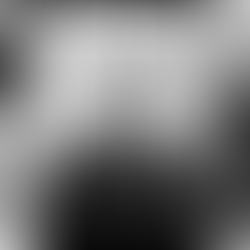Behind the Scenes: Ray Harryhausen Crafting Mythical Creatures for Clash of the Titans
- dthholland

- Oct 27, 2024
- 4 min read

Clash of the Titans (1981) stands as a monumental film in the history of cinema, celebrated not just for its epic storytelling but for the unparalleled creativity behind its special effects. Directed by Desmond Davis and written by Beverley Cross, this fantasy adventure film loosely retells the Greek myth of Perseus, with a star-studded cast including Harry Hamlin, Judi Bowker, Burgess Meredith, Maggie Smith, and Laurence Olivier. However, one of its most significant aspects is that it marked the final work of legendary stop-motion visual effects artist Ray Harryhausen. His innovative techniques and painstaking dedication to bringing mythical creatures to life on screen made Clash of the Titans a timeless classic.
Harryhausen’s Vision: Mythical Creatures Come to Life
Ray Harryhausen’s work on Clash of the Titans pushed the boundaries of stop-motion animation. In his workshop, Harryhausen crafted an astonishing array of mythical creatures, each designed to challenge and captivate audiences. Among the most notable were Medusa, Pegasus, the Kraken, and Bubo the mechanical owl. Each of these creatures began as sketches and small sculptures in Harryhausen’s workshop, where he would give them their distinctive look and feel, paying meticulous attention to details such as texture, articulation, and expression. Every character was imbued with lifelike qualities to seamlessly integrate into the live-action world.
Speaking about the mythological roots of his work, Harryhausen remarked, “We’ve gone into mythology before with Jason and the Argonauts, and we always wanted to make a sequel. Mythology is the ideal subject for my form of cinema, but Clash of the Titans is more complicated than other films. We have a greater variety of monsters and creatures, locations spanning four countries and the technical part is more complicated.”
The Kraken: A Towering Marvel
One of Harryhausen’s crowning achievements in Clash of the Titans was the Kraken, the enormous sea monster summoned by the gods to wreak havoc. The Kraken’s scenes were intricately planned to showcase its sheer size and terrifying power. Harryhausen layered the model with detailed scales and complex limb movements to evoke a sense of grandeur and menace. Each tentacle and muscle was animated frame by frame, creating a visual spectacle that stands the test of time. The Kraken’s emergence from the sea and its interaction with the live-action sequences were feats of precision, blending the creature into the film’s world flawlessly.
Bubo the Owl: A Mechanical Marvel
Another memorable creation was Bubo, the mechanical owl that provided moments of comic relief throughout the film. Bubo’s design was a delicate blend of realism and charm. Harryhausen engineered the owl to mimic the natural movements of a bird, from the fluttering of wings to the subtle turning of the head, all with an added layer of humour. The mechanics behind Bubo were complex, requiring Harryhausen to combine his artistry with technical innovation. Bubo’s quirky personality shone through in each scene, making it a fan favourite despite being surrounded by more menacing creatures.
Medusa: A Masterpiece of Animation
Perhaps the most intricate of all the creatures was Medusa, a figure rooted deeply in Greek mythology, known for her petrifying gaze and snake-infested hair. Harryhausen’s Medusa required a staggering amount of attention, as each serpent in her hair was individually animated. Her body, designed as a snake-like creature, moved with a slithering fluidity that added to her eerie presence. Harryhausen imbued Medusa with an expression that combined terror and malice, a delicate balance that required countless hours of fine-tuning. The sequence in which Perseus faces Medusa is one of the film’s most iconic moments, in large part due to the lifelike animation that brings this terrifying figure to life.
Dynamation: A Groundbreaking Technique
Harryhausen’s renowned Dynamation process was crucial in making Clash of the Titans a cinematic marvel. This technique allowed him to combine stop-motion animations with live-action sequences in a way that was groundbreaking at the time. Speaking of the challenges in the film, Harryhausen explained, “We have intimate scenes between the actors and a character called Calibos, and they have to act and react accordingly as in normal dramatic situations. Calibos is part man, part creature, and he is Dynamated in later sections of the film. It’s the first time we’ve done something as intricately woven as this.”
Calibos, a central antagonist in the story, was a unique blend of live-action performance and stop-motion animation. Harryhausen’s intricate weaving of Calibos into the live-action sequences brought a new level of depth to the character, showcasing the potential of Dynamation to bring fantasy worlds to life.
Behind the Scenes in Harryhausen’s Workshop
The behind-the-scenes photos of Ray Harryhausen working on Clash of the Titans provide a fascinating glimpse into the artist’s process. His workspace was a hive of creativity, filled with sketches, small sculptures, lighting rigs, and miniatures. Harryhausen worked tirelessly to animate each creature frame by frame, a painstaking process that demanded patience and precision. His attention to detail is evident in the behind-the-scenes images, where the models are shown in various stages of development, surrounded by notes and reference materials.
Harryhausen’s devotion to his craft is perhaps best exemplified by the environment he created for his work. He had a hands-on approach, crafting and animating each creature himself, ensuring that every frame was infused with his vision. His stop-motion models weren’t just mechanical creations; they were characters with depth, carefully brought to life through his innovative techniques.
The Legacy of Clash of the Titans
Ray Harryhausen’s work on Clash of the Titans remains a benchmark in stop-motion animation, influencing generations of filmmakers and animators. The film’s creatures, from the terrifying Kraken to the enigmatic Medusa, continue to capture the imagination of audiences worldwide. Harryhausen’s unique ability to breathe life into inanimate models is a testament to his unparalleled skill as an artist and animator. His meticulous approach to creating mythical creatures made Clash of the Titans not just a film but a visual spectacle, a lasting legacy of a master craftsman.
Harryhausen’s influence endures in the world of special effects, and behind-the-scenes glimpses of his work provide a window into the dedication and artistry that made his creations so iconic. Clash of the Titans was not just the end of an era for Harryhausen but a celebration of his ability to blend mythology, art, and technology into cinematic history.




































































































































